Power and Efficiency
The current crop of power supplies are all about efficiency and power and for good reason, you require power enough to manage today’s video cards and efficient enough not to destroy your power bill. Lately Thermaltake has updated their famous Toughpower line with the newer Toughpower XT more specifically for this review the Toughpower XT 750w. Revision of the Toughpower line brought about changes that appear to be relatively minor… First they added several LED lights that are power supply status lights ( more on that later), and a switch that will allow you to set a power off delay on the cooling fan which theoretically will prolong the life of the power supply. These added “features” combined to give us the pleasure of reviewing the Thermaltake Toughpower XT 750w an 80Plus bronze certified power supply.
Features:
- Complies with ATX 12V 2.2 & EPS 12V version
- Supports Dual Core / Quad Core CPU, Nvidia SLi, and all Multi-GPU technologies.
- Built in next generation 8-pin PCI-Express graphic card connector.
- Four +12V rails(12V1,12V2,12V3,12V4) supports high-end graphic card and PC system (combined loading of 60A).
- Independent Voltage Circuit: offers unflappable current delivery under heavy load and makes voltage output more stable
- Active Power Factor Correction (PF>0.99) and high efficiency (up to 85%)
- Extremely good voltage regulation (±3%): provides steady voltage for system
- Industrial grade components (capacitor, transformer, etc)
- High reliability: MTBF>120,000 hours
- Mirror effect housing and reliable 14cm ball-bearing fan
- Japan made capacitor promise the best reliability.
- Green power design that meets energy star, blue angel requirements
- Protections: Over Current, Over Voltage, and Short-Circuit protection
- Safety / EMI Approvals: CE, CB, TUV, FCC, UL, CUL, and BSMI certified

Specs:
| GENERAL INFO | Model | W0117 |
| Power Factor Correction (PFC) allows power distribution to operate at its maximum efficiency. Active PFC automatically corrects for AC input voltage, and is capable of a full range of input voltage |
Type | ATX 12V 2.2 Series |
| Max. Output Capacity | 750 Watts | |
| Color | Black | |
| Dimension ( W / H / D ) | 16cm(L)x15cm(W)x8.5cm(H) | |
| PFC (Power Factor Correction) | Active PFC | |
| Power Good Signal | 100-500 ms | |
| Hold Up Time | 16ms | |
| Net Weight | 2.6 kg | |
| AC INPUT | Input Current | 115VAC / 10A max. 230VAC / 5A max. |
| Input Frequency Range | 47 ~ 63 Hz | |
| Input Voltage | 100 VAC~240 VAC | |
| Cooling System | 14 cm Fan SPEED: 1900 RPM (±10%) DIMENSION: 140 X 140 X 25 mm BEARING TYPE: Two ball-bearing AIR FLOW: 82 CFM TEMP. AUTO CONTROL |
|
| Noise | 16dB at 1300RPM | |
| MISCELLANEOUS | Efficiency | up to 85% |
| Safety Approval | CE, CB, TUV, FCC, UL, CUL, and BSMI certified | |
| Certification | 80 Plus, NVIDIA SLI-Ready Certified PSU |
|
140mm ball bearing fan that cools the |
I mentioned earlier in the review that the Thermaltake Toughpower XT 750w was an 80Plus certified power supply and the specs show that it does indeed have that certification so let me explain. In order for a company to achieve the 80 Plus certification for their power supply they must demonstrate that the power supply maintains a minimum efficiency of 85% at typical load (50% load, i.e. 375 W) and a minimum efficiency of 82% under light (20% load, i.e. 150 W) and full (750 W) loads.
A Closer Look:
The box that the Thermaltake Toughpower XT came in was pretty detailed, definitely much better than the simple brown box that the NZXT beta case came in…
It is good to see company spending money on the packaging their product comes in for marketing reasons because when you see this product in a retail store you will be more apt to pick it up and actually purchase something that looks good instead of a simple box.
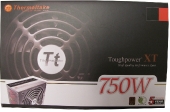
shelf facing – what you will see |
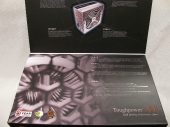
Top flap containing marketing. |
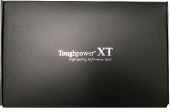
This is the box within the box. |
Packaging aside companies need to stop putting out power supplies that are non modular. Every power supply that I have used that is non modular always has a large set of cables that end up being extra because not everyone needs 10 SATA power cables. I understand the large debate over modular VS. Non modular power supplies, it basically comes down to what the consumer needs. Building and marketing two versions of a power supply just to fit the needs of the two niche markets is just crazy that money should be spent to create a better modular power supply with the quality of the non modular counterparts.
|
just to the right of the power switch is the fan delay switch a three setting switch that will set the delay for the fan power off. Three positions are available “Auto” 15 seconds and 30 seconds. |
while its great that the cables are wrapped in mesh to maintain cable integrity it is unfortunate that it does not extend into the power supply housing. |
|
This brings me back my original complaint of how much room is taken up by all the additional and most of the time unnecessary cabling. |
The three lights on the side of the power supply |
Testing:
I tested this power supply by plugging it into an older computer for a burn in period of 24 hours before testing. After the 24 hour burn in period I tested the out put voltages with a FLUKE digital multimeter at the ATX connector, all values are compared to the current ATX standard of 2.2 visible here.
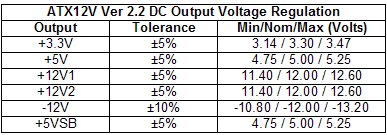 |
The following table displays the results for my testing I attempted to test under varying load requirements simulating a 20%, 40%, 60%, 80%, and 100% of the rated maximum capacity unfortunately my tests were not dead on, the percentages differ slightly which I noted on the top of the table.
| Input | Load=19.5% | Load=39.6% | Load=59.4% | Load=79.7% | Load=99.4% |
| +12v1 | 5A ( 60W) | 11A (132W) | 16A (192W) | 22A (264W) | 27A (324W) |
| +12v2 | 5A (60W) | 10A (120W) | 16A (192W) | 21A (252W) | 27A (324W) |
| +5v | 2A (10W) | 4A (20W) | 6A (30W) | 8A (40W) | 10A (50W) |
| +3.3v | 2A (6.6W) | 4A (13.2W) | 6A (19.8W) | 8A (26.4W) | 10A (30W) |
| -12V | 0.5A (6W) | 0.5A (6W) | 0.5A (6W) | 0.5A (6W) | 0.5A (6W) |
| +5VSB | 1A (5W) | 1.5A (7.5W) | 2A (10W) | 2.5A (12.5W) | 3A (15W) |
| TOTAL : | 147.6W | 298.7W | 449.8W | 600.9W | 744.9W |
| Room Temp: | 75oF – 25oC | 75oF – 25oC | 75oF – 25oC | 75oF – 25oC | 75oF – 25oC |
| PSU Temp: | 75oF – 25oC | 75.9oF – 25.5oC | 77.1oF – 26.2oC | 84.36oF – 30.2oC | 82.7oF – 29.3oC |
| Voltage Stability: | Pass | Pass | Pass | Pass | Pass |
| AC Power draw: | 175W | 348W | 528W | 718W | 894W |
| Efficiency: | 84% | 85% | 85% | 83% | 83% |
After reviewing the table above it is clear that this is a very stable and efficient power supply firmly that has planted itself in the 80Plus bracket. There is a slight drop in efficiency at higher power levels but nothing that’s all that unexpected overall a very nice power supply.
Conclusion:
Overall the Thermaltake Toughpower XT 750w was a power supply that seems to have everything going for it, while it doesn’t really do anything new it does maintain a very solid standard. The testing that the power supply has over gone shows that it can maintain a solid operating core with only minor temperature increases which is fully to be expected under heavy load, if anything I would have expected a larger increase. While the Toughpower XT 750w is not the most efficient power supply on the market it does score a very solid 80% efficiency and let’s face it, if you’re using a 750W power supply your probably not too worried on the power consumption, you are probably more worried about the performance of the PSU and how its stability affects your components. Overall I would recommend this power supply to anyone who is looking for a solid performer for a performance rig but not looking to be a guinea pig for any new fangled features. Once again Thermaltake delivers an excellent power supply and at an excellent prict for a PSU in this category and wattage. It is nice to see Thermaltake not compromising on quality while keeping the pricetag low.



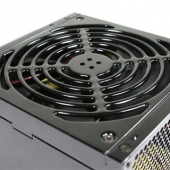

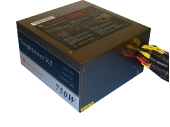
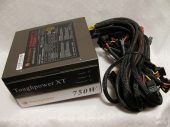


[…] The current crop of power supplies are all about efficiency and power and for good reason, you require power enough to manage today’s video cards and efficient enough not to destroy your power bill. Lately Thermaltake … Antec Nine Hundred Two Mid Tower Case @ ThinkComputers – Lian-Li PC-B25F case @ Fudzilla – Thermaltake Toughpower XT 750W Power Supply @ Techware Labs – OCZ Z Series 650W PSU @ PureOC – Thermaltake Element V Case @ bit-tech – Cooler Master HAF 922 […] …Read more… […]
[…] TechwareLabs gets into the Thermaltake Toughpower XT 750W Power Supply […]
[…] Thermaltake Toughpower XT 750W Power Supply Review @ TechwareLabs […]
[…] Thermaltake Toughpower XT 750W Power Supply Review @ TechwareLabs […]
[…] Thermaltake Toughpower XT 750W Power Supply Review @ TechwareLabs […]
[…] Thermaltake Toughpower XT 750W Power Supply Review @ TechwareLabs […]
[…] http://www.techwarelabs.com/thermaltake-toughpower-xt-750w-power-supply/ […]
[…] – Antec Nine Hundred Two Mid Tower Case @ ThinkComputers – Lian-Li PC-B25F case @ Fudzilla – Thermaltake Toughpower XT 750W Power Supply @ Techware Labs – OCZ Z Series 650W PSU @ PureOC – Thermaltake Element V Case @ bit-tech – Cooler Master HAF 922 […]
[…] TechwareLabs has a Thermaltake Toughpower XT 750W Power Supply Review […]
[…] Via [TechwareLabs] […]
Social comments and analytics for this post…
This post was mentioned on Twitter by DanTWL: Review: Thermaltake Toughpower XT 750W Power Supply – http://www.techwarelabs.com/thermaltake-toughpower-xt-750w-power-supply/…
[…] This post was mentioned on Twitter by ChrisTWL, TWLDotCom, Ian_TWL, willhalsteadTWL, Dan Shannon and others. Dan Shannon said: Review: Thermaltake Toughpower XT 750W Power Supply – http://www.techwarelabs.com/thermaltake-toughpower-xt-750w-power-supply/ […]